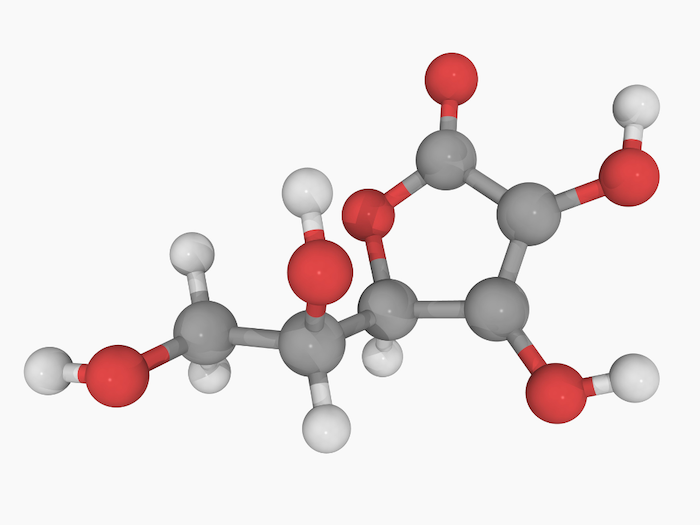As you may or may not know, vitamin C is an extremely versatile nutrient. With an impressive debut to the world of science about a century ago by curing scurvy – a deficiency disease which killed more than two million sailors – vitamin C has not stopped dazzling researchers since.
 Since its discovery in 1928, vitamin C has been shown to:
Since its discovery in 1928, vitamin C has been shown to:
- – Support the immune system
- – Promote healthy, glowing skin
- – Bolster heart health
- – Regulate stress
- – Protect cells from free radicals
- – Improve iron absorption
- – Support cognition
But the problem with vitamin C is that it’s water soluble. So, not only does our body not make it, we’re unable to store it.
This means you need to get an adequate amount of vitamin C every day.
As a result, you may have found yourself perusing vitamin C supplement labels, only to keep coming across the words “ascorbic acid”. Or maybe even other types of “ascorbates”. If this has had you scratching your head and thinking I just want vitamin C, then keep reading because we’re about to clear everything up!
What’s the deal with ascorbic acid?
Do you know what dihydrogen monoxide is? It’s something you consume every single day no matter who you are or where you live. That’s because dihydrogen monoxide is the chemical name for water!
Similarly, ascorbic acid is the chemical name for vitamin C. Ascorbic acid is vitamin C and vitamin C is ascorbic acid.
On product labels, supplements are legally required to put the chemical name, which is why you’ll see these words come up so often.
While this all may sound pretty simple, there are a few factors that do add a bit of confusion. Let’s take a look…
 Different types of ascorbates
Different types of ascorbates
While the above solves the ascorbic acid debacle, there’s more to it. There are different types of ascorbates, with the most confusing one being L-ascorbic acid.
The L stands for levorotatory. It references how the molecule itself rotates to light.
Are ascorbic acid and L-ascorbic acid the same thing?
Chemically, yes. Structurally, no. But it’s widely accepted that these two different variations are the exact same with how they function within the body. However, some argue that L-ascorbic acid is more absorbable and potent.
L-ascorbic acid is the type of vitamin C found in nature. This is why we use L-ascorbic acid for our Micelle Liposomal Vitamin C.
Other types of ascorbates
While the above covered pure vitamin C, you may have come across the nutrient combined with other molecules.
Commonly, these will be sodium ascorbate – sodium combined with vitamin C – or calcium ascorbate – calcium combined with vitamin C. Other variations include vitamin C mixed with manganese, potassium, magnesium, chromium, and zinc.
These are simply taken to offer a variety of nutrients in one.
How to get vitamin C
Now that you know the nuances between vitamin C’s potential forms, how should you go about getting it?
Well, when you get vitamin C from, say, oranges, you’re getting L-ascorbic acid. This is the most potent and natural form of vitamin C. This is why we use L-ascorbic acid in our highly absorbable vitamin C formula.
So not only can you get vitamin C the way nature intended, you can also ensure your body is taking it in and using it. If you’d like to read more about Purality Health’s vitamin C, including what makes it so absorbable, click here!
